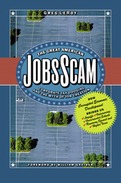 Introduction
Introduction 
Money for Nothing
Lurking within the records of most cities and states in America there lies a scandal. A tax scandal. A jobs scandal. A corporate and political scandal.
Look up the names of corporations that have received taxpayer subsidies in the name of jobs. Almost every big company has gotten them. In fact, the average state now has more than thirty economic development subsidies, many of which are locally granted by cities and counties. These subsidies include property tax abatements, corporate income tax credits, sales and excise tax exemptions, tax increment financing, low-interest loans and loan guarantees, free land and land write-downs, training grants, infrastructure aid—and just plain cash grants.
Chances are you will find companies—many companies—that have failed to create or retain as many jobs as they said they would. Companies that are paying poverty wages or failing to provide healthcare to their employees. Companies that are abandoning our cities and sprawling onto farmland and natural spaces. Even companies that are outsourcing jobs offshore.
Dig a little deeper and you’ll undoubtedly find companies that have not created any new jobs—even some that have actually laid people off since they got the subsidies. Other companies that have gotten paid just to move existing jobs from one place to another, where they are proclaimed to be “new jobs.”
How can companies get away with this? Because the system is rigged. Corporations have it down to a science. They have learned how to chant “jobs, jobs, jobs” to win huge corporate tax breaks—and still do whatever they wanted to all along.
That’s the Great American Jobs Scam: an intentionally constructed system that enables corporations to exact huge taxpayer subsidies by promising quality jobs—and then lets them fail to deliver. The other benefit often promised—higher tax revenues—often proves false or exaggerated as well.
This system costs taxpayers an estimated $50 billion a year in total spending by states and cities.1 The bottom of the iceberg—in every sense of the word—is the tax breaks. Those granted by states—income, sales, and excise taxes—are the least visible, least accountable, and most corrosive means by which states fund job creation. Those granted locally—in particular, property tax abatements and diversions—are especially harmful to schools.
This system has a long history and many moving parts. It can be traced at least as far back as the Great Depression, but it really matured by the 1970s. By then, most of the key actors were in place: secretive site location consultants who specialize in playing states and cities against each other; “business climate” experts, with their highly politicized interpretations of tax and jobs data; and an organized corporate network orchestrating attacks on state tax systems.
Today, this $50 billion-a-year pot has attracted an even more elaborate cast of characters: rented consultants proffering rosy projections about job creation and tax revenue; subsidy-tracking consultants to help companies avoid leaving money on the table; and even an embryonic industry that’s helping businesses buy and sell economic development tax credits.
Perhaps we could overlook all this chicanery if the rising tide of money were lifting all the boats. But in return for all our taxpayer dollars we are not getting higher wages, better benefits, a stronger tax base, or better public services. Instead, for the last quarter century, most workers’ wages have stagnated or fallen, healthcare has become less affordable and available, and pensions have shrunk in number and value. States and cities have developed structural budget deficits, forcing cutbacks in everything from school programs to infrastructure maintenance.
The only clear winners are large corporations. In return for building new facilities in many states, companies are actually getting negative income taxes. Subsidy packages routinely exceed $100,000 per job. Guess who’s getting stuck with the tab. When the big boys pay less, either the rest of us pay more or the quality of our public services declines—and usually it’s some of both.
At the core of this scandal are corrupted definitions of “competition” that obscure cause and effect. We must create no-tax zones for factories, say the governors, to be competitive with other states—even though the whole country is bleeding manufacturing jobs and the obvious issue is globalization. We have to create a new TIF district (that’s “tax increment financing”) and steal shoppers from neighboring suburbs, say the mayors, to compete for tax base—even though malls in older areas are dying.
Those who peddle and those who buy into these corrupted definitions salute the corporate bottom line while thumbing their noses at common sense, social science, and good government. These corruptions are the deliberate creations of a 50-year campaign by corporations to divide and conquer the states—as well as the suburbs. This corporate gospel of competition preaches that governments at all levels must not be allowed to cooperate with each other. Public relations campaigns, consulting studies, lobbying of federal and state legislators, litigation all the way to the Supreme Court—companies will do whatever it takes, but governments must not be allowed to work together against the corporate assault. They must be kept in the dark and allowed into the room only when it’s time to talk about subsidies.
To that end, according to the gospel, states must not be allowed to compare notes to determine whether companies are lying about competing subsidy bids or cheating on their income taxes. Instead, states must only be allowed to compete to see which will tax the least corporate income, or which will give the biggest tax gift to a trophy deal.
Cities and suburbs must not be allowed to cooperate either, even though their fates hinge upon the health of their regional economies, not upon individual deals. Instead, localities must compete for tax base by pirating jobs and retail sales from each other, even though this means chewing up farmland for wasteful sprawl and throwing away older areas, poor people, and past infrastructure investments.
As public officials internalize these corrupted definitions, governments deliberately fail to cooperate with each other in the taxpayers’ interest. Business becomes the alpha constituent. In these “public-private partnerships,” government gets to play a single role: the dispenser of dollars. Blindfolded public officials practice job creation guided by wolves posing as Seeing Eye dogs.
At every level, this system demeans and degrades public officials: the economic development official forced to bid for an unknown company against unknown competing sites; the school board members who have no say in the property tax abatements that will corrode their budget; the revenue director whose sober advice is upstaged by the frothy projections of an economist rented by the Chamber of Commerce; the governor who overspends on a “trophy” project because she so fears being known as “the governor who lost us Mercedes-Benz.” Those who would dare to ask an impertinent question are quickly singled out for ridicule and isolation: they must be against jobs.
Besides creating corporate windfalls, the Great American Jobs Scam is causing all manner of collateral damage. It was used to blunt calls for trade reform long before NAFTA. It bankrolls the pirating of one state’s jobs by another state. It corrodes state budgets. It subsidizes private for-profit prisons—and hundreds of Wal-Mart facilities. The Great American Jobs Scam is used to help bust unions. It subsidizes poverty-wage companies that saddle us with hidden taxpayer costs such as Medicaid and Children’s Health Insurance Program bills. It is helping create a massive tax-burden shift away from big companies onto working families and small businesses. It is diverting precious resources away from the two investments that really do grow good jobs—skills and infrastructure. And just don’t get me started about stadiums.
The scam has also created mass confusion about true cause and effect—about how little difference tax cuts and subsidies really make when it comes to jobs. The prevailing “business climate” ideology that plagues us today is a hangover from the meanest elements of the Old Economy. Our beliefs about taxes and jobs were shaped by a very politicized series of studies in the 1970s and 1980s that served the lobbying agenda of footloose manufacturers looking for cheap labor in the South on their way to Mexico or China. That agenda had no value for the rest of the economy then, and it is just what we don’t need to succeed in the New Economy today.
Much of our prevailing ideology about jobs and land is a hangover from a manufacturing site location bias against cities and from a post-war consensus built around “white flight” from cities, concentrated poverty among people of color in older areas, and lots of subsidies for jobs out by the interstate—be they factory, office park, or Wal-Mart jobs. That consensus has left us with a sprawling, dysfunctional built environment that is harming our health and our economic competitiveness.
That the scam could get this far out of hand suggests a profound breakdown in whatever consensus we ever had about corporate responsibility to our society. The way you handle your money is your value system. By their rampant tax dodging, large corporations are collectively saying: We don’t care if the schools fall apart and the bridges are crumbling and the public health systems are impoverished and college is becoming unaffordable. We are not all in this together. We are not investing in our communities’ futures. We are disinvesting.
The Great American Jobs Scam belongs in the dustbin of history To put it there, we need strict accountability measures that will curtail private disinvestment and restore public reinvestment. By getting our taxpayer dollars out of private deals and into public goods, and by integrating our jobs strategy with land-use planning, we can spend less and get more.
We must eradicate the subsidy scams that have grown up around the corrupted definition of competition and replace them with a healthy new form of competition in which places compete based on their assets—their skilled labor base, their infrastructure, their schools and universities, their entrepreneurial culture, their quality of life—which are made equally available to all employers.
Fortunately, despite the siege of disinformation, there is a rich bipartisan history of reform that has created proven precedents for dismantling the scam. The most important of these is disclosure. When more information is available about the costs and benefits of the scam, many more people will get involved—and that’s the scammers’ darkest nightmare.
Getting a lot more people involved is the only way to challenge the prevailing ideology. You can see that ideology for yourself by going to any conference of economic development professionals and watching the public officials. You will never hear them crow about how well their working families are doing, about rising median incomes or declining dependency on Medicaid or fewer children suffering from asthma. But you will hear them touting big deals. And you will see them courting site location consultants and corporate vice presidents.
This is what economic development in the United States has become. Welcome to the Great American Jobs Scam.




 Introduction
Introduction 



